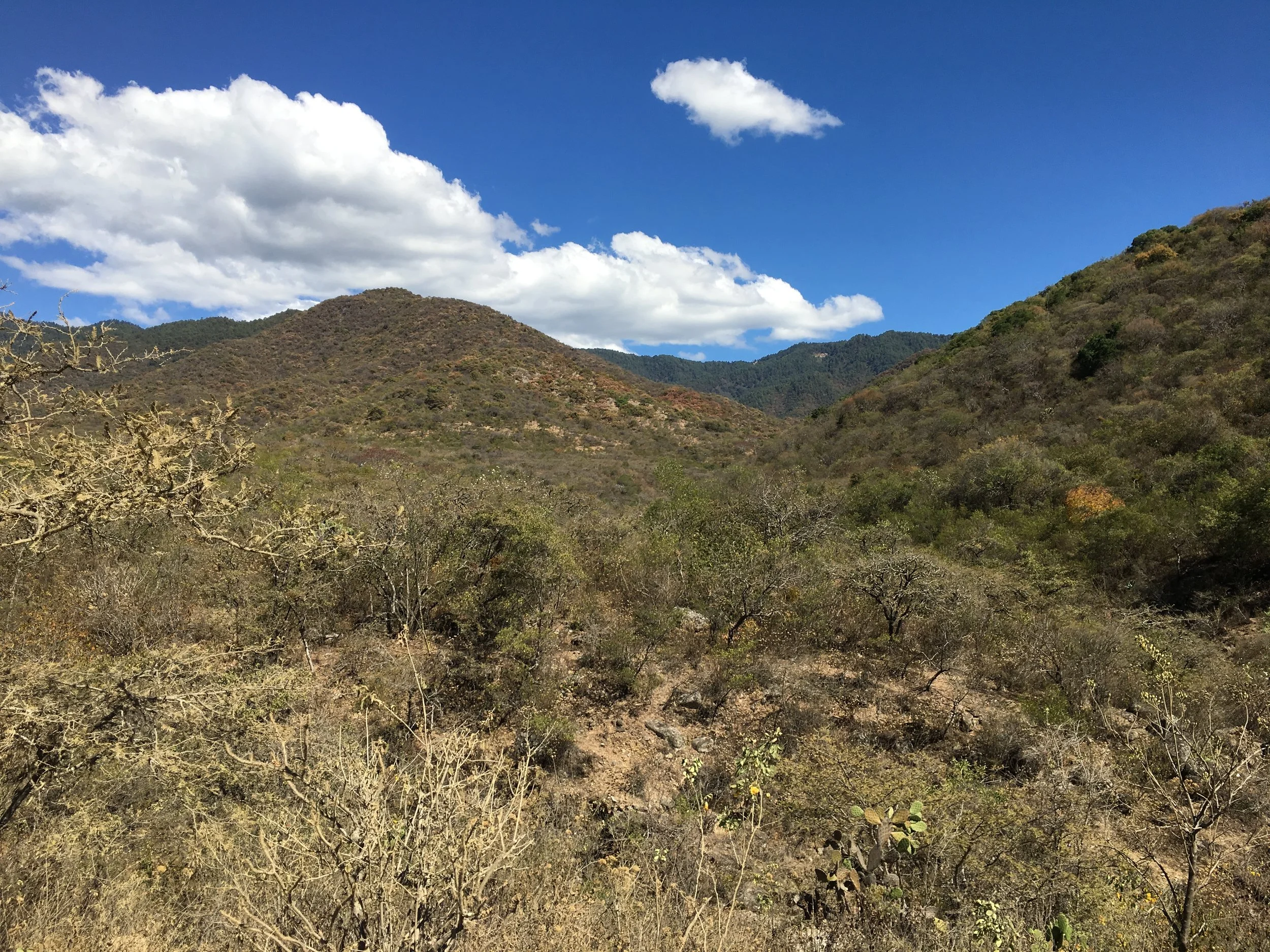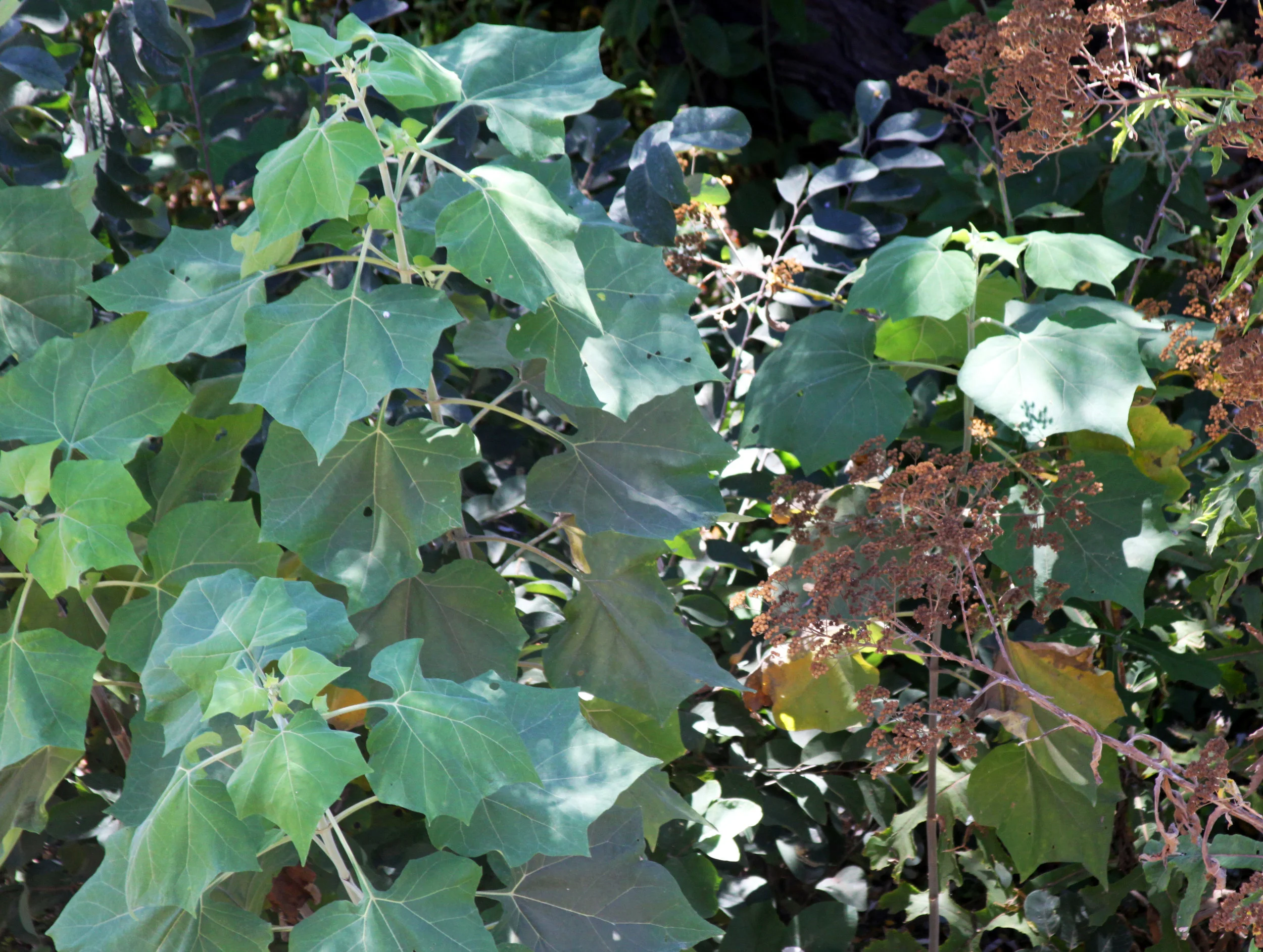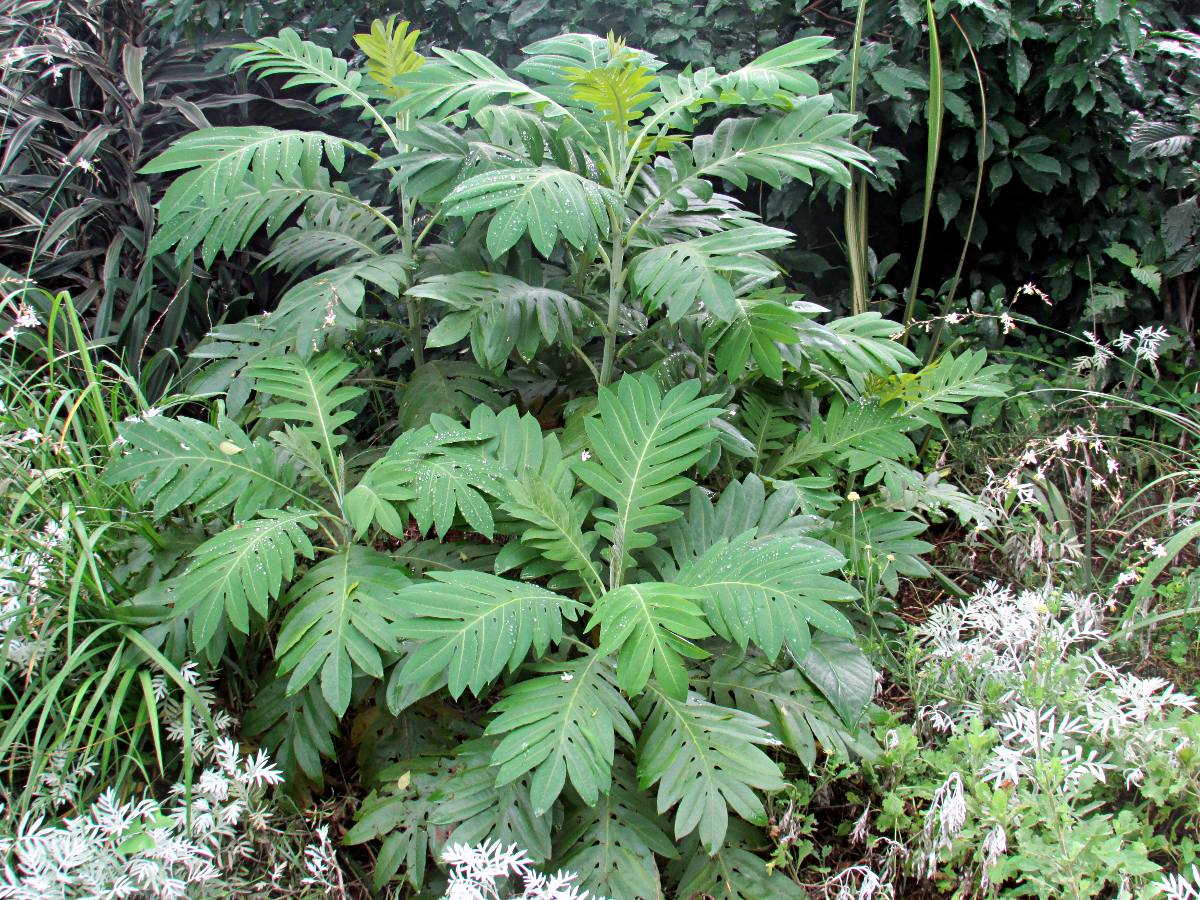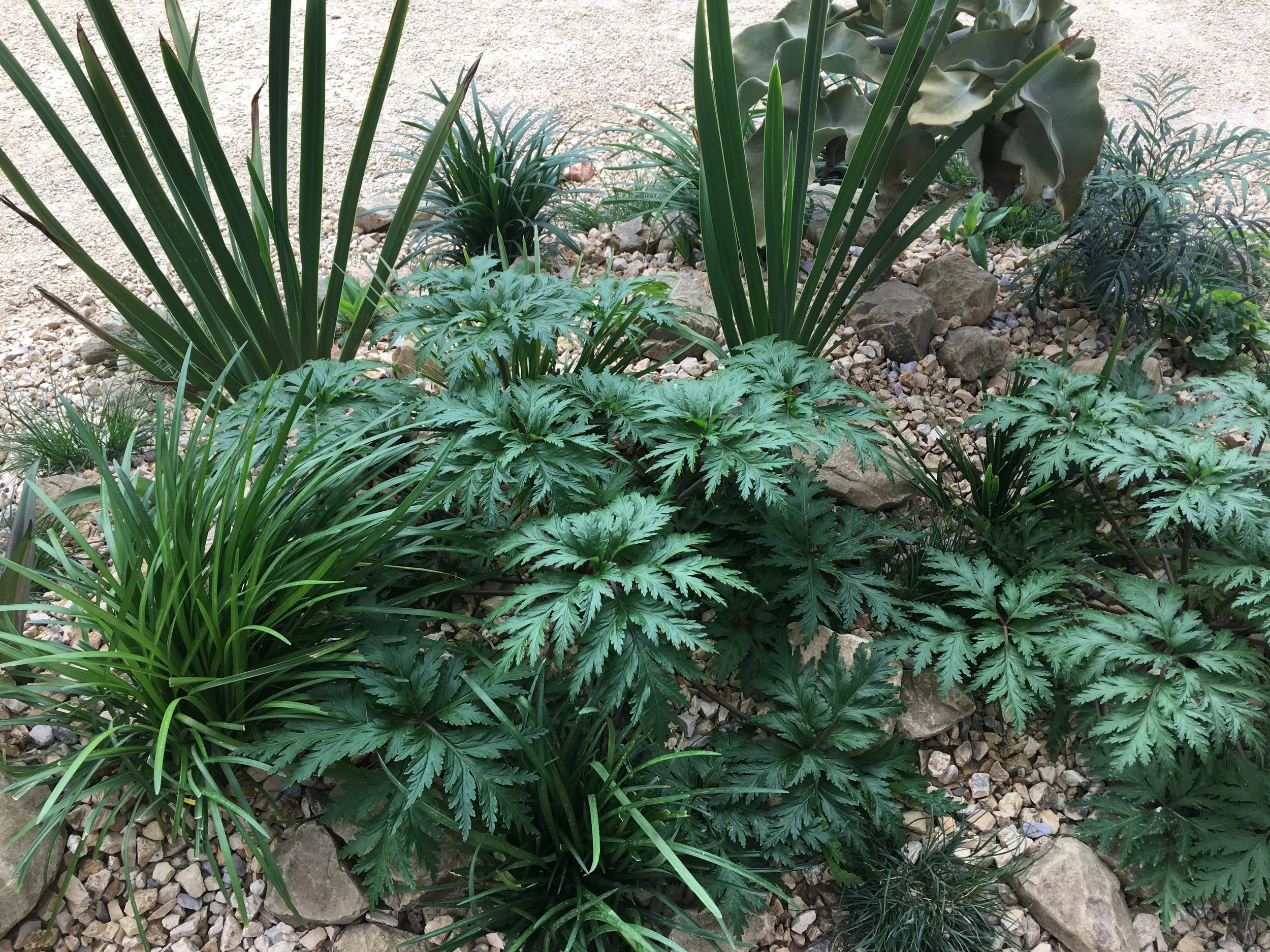Mediterranean adjacent
Platform park site
In January of 2019 I was hired by the incredible landscape firm Terremoto to design the plantings for a new park at Platform in Culver City, a municipality in Los Angeles. The park sits under the elevated metro line, which runs east-west, creating a challenging shade condition. Portions of the planting beds fall in complete shade year round, others are in shade all winter and blazing sun in summer, and still other areas are in full sun during the winter and full shade in summer.
When I first started designing for the space, I sought to use only herbaceous perennial plants, as I do in many of my dry garden designs. Yet with this erratic shade condition, I knew my typical mediterranean-climate plants would not work. I started making a list of beautiful shade plants from cold climates - Actaea, Aruncus, Astilbe…and so on…dreaming of the frothy woodland whimsy I’d seen in magazines. Yet few of these grow very well in southern California; without a real winter period the plants do not know when to go dormant or when to return. Many typical cold-climate plants can be successfully grown in northern California, but in Los Angeles it is simply too dry and lacking sufficiently cold winter temps.
Los Angeles occupies a unique position in California. While technically a mediterranean climate, characterized by winter rains and summer drought, the city averages less than 15 inches of rainfall annually, far less than the prototypical mediterranean climate regions of the world. The Bay Area, for instance, receives around 25 inches annually, while Montpellier, in the south of France, receives almost 30 inches. In drought years, Los Angeles precipitation levels drop precariously close to its neighbor the Mojave Desert.
Simultaneously, Los Angeles takes on the characteristics of another neighbor - the subtropical regions of Mexico. The majority of the Los Angeles basin never falls below freezing, with winter temps typically only delving to the low 40s. Closer to the coast, in areas such as Santa Monica and Venice, the temperature rarely drops below 50 degrees F. This condition allows for the planting of many tender subtropical plants.
I didn’t really grasp the full meaning of this subtropical connection to Los Angeles until I traveled to Mexico, around the same time I started the Platform project. I was generously toured through Oaxaca and Mexico City by Norma Maldonado of Tana Karei, a young interiors and furniture design firm that creates beautiful work. In Oaxaca, we explored the Sierra Madre del Sur, driving through the small town of Teotitlán del Valle into the mountains. Oaxaca is similarly characterized by a lack of freezing temperatures and a pronounced dry period, and I was shocked at how similar the landscape looked to the chaparral of southern California. I read that many of the plants in Mexico have similar ancestors to Californian plants, well-adapted to an extended period of drought, yet eventually adapting to different dry seasons - winter in Mexico, summer in California.
Might as well be Malibu: Foothills above Teotitlán del Valle, Oaxaca
Podachaenium eminens, the amazing “Tree Daisy” in a riparian area above Teotitlán del Valle, Oaxaca
At the base of these foothills the land seemed almost desert-like, the foothills approximated chaparral, and at higher elevations - cloud forest. Upon seeing these conditions pressed up next to eachother, the arid with the subtropical, I had the embarrassingly obvious epiphany that I could use these subtropical plants in Los Angeles, as every Angeleno has realized since the area was re-colonized by the Americans. I texted with David Godshall of Terremoto - and we spoke of how traveling to Mexico made us more deeply realize the connection of Mexico to LA - that the imperative for tropical plantings in LA was not solely exoticism but also displayed the deep relationship between LA to central and southern Mexico; a different climate but the same land. It was not so long ago that Los Angeles was just Northern Mexico.
Expanding my palette to include frost-free climates opened up a whole world of plants to use, and plants that would likely fare better in mild southern California than more temperate climate species. Upon returning to LA and spending many hours researching, I chose a wide variety of plants for Platform from slightly wetter understory, woodland edge, and riparian plant communities adjacent to mediterranean and arid plant communities.
Platform plantings growing in. The park will open in June.
The plants
One plant from this region I found of particular note for Platform is Bocconia frutescens, or the Plume Poppy. It grows from Oaxaca through Central and South America as well as the Caribbean. Native to a wide array of conditions from roadsides, disturbed areas, woodlands, in areas both wet and dry; this variability of habitat makes it ideal for the Platform planting. It’s also just a fun name to say with a fake Italian accent - Bocconia.
The Plume Poppy’s leaves emerge greyish green and fade to a rust color with white undersides. The individual flowers are not much to look at on their own but appear in a glaucous green cloud fading to smokey brown-orange, creating a whimsical effect. With its unusual form and coloring, the Plume Poppy is useful to tie the drier, sunnier areas of the park planting together with the more tropical character of the shade gardens.
Bocconia frutescens, with Piper auritum and Neomarica caerulea
Bocconia frutescens, young foliage
(Photo: Roger Stringer https://www.zimbabweflora.co.zw/cult/image-display.php?species_id=184960&image_id=1)
Another Oaxacan plant is particularly useful in an area under the metro at Platform that is fully shaded through winter, yet in sun all summer. Dahlia campanulata, or the Weeping Tree Dahlia, has a long winter dormancy, with new stalks emerging from the ground in May, and then grows at light speed into tree-like size, flowering in the fall, right as the planting area is descended into shade as the sun lowers in the sky towards winter. At this point, the plant can be cut to the ground, sitting out the winter until the sun returns overhead.
The Weeping Tree Dahlia grows in the semi-arid foothills of the Sierra Madre del Sur, as well in the cloud forests at higher elevations. It is an experimental plant for Platform but will be exciting to see how it performs - crossing my fingers that Culver City is coastal enough to grab some of that summer fog.
Dahlia campanulata, Weeping Tree Dahlia
Photo: Uluwehi Knecht
Geranium maderense, seen below in the planting at Platform, grows on the island of Madeira off of North Africa. Much of Madeira has a classic mediterranean climate, but as the elevation rises the climate becomes more characterized as humid subtropical. Some maps show this as “supra-mediterranean,” denoting the higher elevation effects on climate. The Portuguese colonists, upon arriving to Madeira in the 1400’s, noted these differences in climate on the island, and built levadas, or small aqueducts, from the wetter, higher elevations of the island to the drier parts. The Madeira Geranium grows along these shady levada pathways, in the understory of the Laurel forests.
The Madeira Geranium forms a large mound approximately 4’ wide by 4’ tall of large, fern-like foliage. The plant has an interesting habit of folding its branches down to the ground as it grows, allowing the lower branches to support the weight of the large flower mass of pink or white flowers, emerging as a dome above the foliage. The textural leaves form a large focal point while also intertwining and blending with surrounding plants.
Geranium maderense at Platform, from the “supra-mediterranean” areas of Madeira Island
Geranium maderense growing next to a levada, Madeira
Photo: http://www.phengels.fr/Madeira-Rabacal-levada-25-fontaines.html ©phengels
Some of the smallest plants you’ll see at the Platform park opening will eventually be the largest. Sparrmannia africana, or African Linden, is a tiny plant hidden amongt the foliage at Platform, but it will reach 12 feet in size. With it’s large, lush, velvety leaves, African Linden is a popular houseplant in Europe but has not been grown widely in the US. It’s ability to thrive in low light/indirect light makes it well-suited to the shady conditions under the metro line.
The flowers display an effect called “haptonasty” or touch-sensitivy; if the flower stamens are touched by a passing insect (or human hand) they extend further out, as if reaching out to the passer-by.
African Linden is found in the winter-rainfall, mediterranean climate region of the eastern cape of South Africa, but also extends into the summer-rainfall areas, as well as Madagascar. This flexibility in temperament is favorable to the unnatural conditions of the Platform site.
Sparrmannia africana, African Linden
Urban sites can present challenges for planting, creating conditions that are simply not found in nature. Playing with climate regions and habitats for the plants at Platform has been a fun way of finding new, interesting plants that can adapt to these conditions. I will post more as the garden grows in. Thanks for reading!
Platform Full Plant List
Angelica gigas
Angelica stricta var purpurea
Anthriscus sylvestris ‘Ravenswing’
Arthropodium cirratum
Asparagus virgatus
Aspidistra elatior
Bartlettina sordida
Bocconia frutescens
Calamagrostis brachytricha
Campanula primulifolia
Carex divulsa
Cereus repandus
Dahlia campanulata
Dracaena draco
Echinops bannaticus 'Star Frost'
Echium wildpretii
Eranthemum pulchellum
Eriogonum grande var. rubescens
Eucomis comosa
Euphorbia atropurpurea
Euphorbia lambii
Fatsia japonica
Festuca mairei
Geranium maderense
Helleborus argutifolius
Hypoestes aristata
Justicia betonica
Kalanchoe behariensis
Kalanchoe 'Oak Leaf'
Linaria purpurea
Liriope 'gigantea'
Lomandra hystrix 'Tropicbelle'
Lysimachia atropurpurea
Mahonia 'Soft Caress'
Michelia champaca
Neomarica caerulea
Nepeta tuberosa
Odontonema callistachyum 'Lavender'
Pachycereus marginatus
Phlomis tuberosa
Plectranthus argentatus
Plectranthus barbatus
Salvia barrelieri
Salvia koyamae
Salvia sclarea 'Vatican White'
Sesleria autumnalis
Sparrmannia africana
Stanleya pinnata
Stipa barbata
Tellima grandiflora
Teucrium betonicum
Verbascum phoeniceum 'Violetta'
Yucca rostrata
More soon.
-Jonathan










